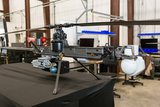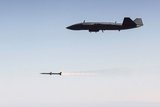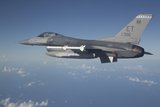Teledyne FLIR upgrades Black Hornet 4 UAS
Black Hornet 4’s radio communications range has been increased by 50%. (Image: Teledyne FLIR)
Teledyne FLIR has been displaying upgrades to its Black Hornet 4nano uncrewed aerial system (UAS) at SOF Week in Tampa, Florida, this week. Just last week the company was showcasing new integrated solutions for its small uncrewed ground vehicle, SUGV 325, and the concept of an integrated solution for the Rogue 1 UAS.
The Black Hornet 4’s radio communications range has increased by 50%, reaching up to 3km, while the system can now operate in 25-knot winds and rain. The Android tablet now has twice the battery life “and a battery heater for charging in cold temps”, the
Already have an account? Log in
Want to keep reading this article?
More from Air Warfare
-
![US approves potential $4.7 billion missile and air defence system sales to Denmark and Italy]()
US approves potential $4.7 billion missile and air defence system sales to Denmark and Italy
Italy could field the JASSM-ER for its combat aircraft including the F-35, while Denmark has been approved for AMRAAM and an Integrated Battle Command system procurement.
-
![Northrop Grumman to fly new Project Talon CCA by late 2026]()
Northrop Grumman to fly new Project Talon CCA by late 2026
The newly unveiled collaborative combat aircraft looks to strike a balance between capability and cost-effectiveness, according to the company.
-
![MBDA and Lockheed move closer to F-35A Meteor flight tests]()
MBDA and Lockheed move closer to F-35A Meteor flight tests
Following the completion of successful ground tests, one more exercise remains before flight testing can begin.






















